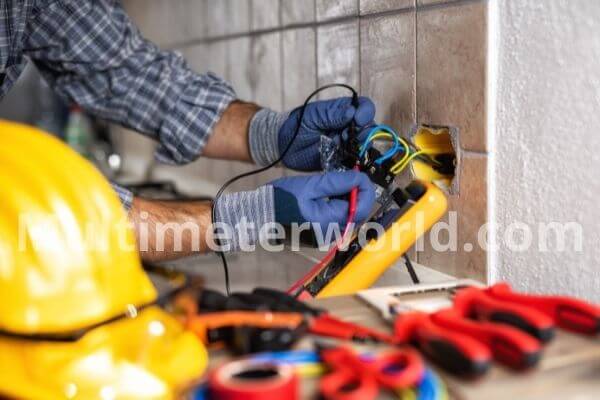Most of the industrial application depends upon inductive motors. So, to regulate or optimize any process you have to control the speed of these motors. The best possible solution to counter this issue is the use of VFD, commonly known as variable frequency drives. While using VFDs there are some set of rules that you must follow. Here I will specially tell you what happens when you changed the lines on a VFD. But firstly let’s see what a VFD is.
What is a VFD and what are its industrial applications?
A variable frequency drive is an electronic device that helps to regulate the speed of an induction motor by varying the input frequency and voltage. VFD’s are widely used in industrial applications where the speed of an induction motor needs to be controlled.
Why use a VFD?
The main reason to use a VFD is to regulate the speed of industrial processes, save energy and protection of inductive loads. For example, if you are using a fan, then there is no need to run it at full speed all the time. By using a VFD, you can control the speed of the fan according to your needs and thus save energy. If you’re using a VFD on a motor then you don’t need to add extra overload protections because a VFD already has all kinds of over current, over voltage, under voltage and phase monitoring settings.
How to make correct connections of any VFD?
There are mainly two types of input voltages, single-phase and three-phase. So, according to the type of voltage supply, you will have to make different connections.
For single-phase input supply, the connections will be as follows:
Line 1 – Connect to L1 (Live) on the motor
Line 2 – Connect to N (Neutral) on the motor
Ground – Connect to Ground (or Earth)
For three-phase input supply, the connections will be as follows:
Line 1 – Connect to L1 (Live) on the motor
Line 2 – Connect to L2 (Live) on the motor
Line 3 – Connect to L3 (Live) on the motor
Ground – Connect to Ground (or Earth)
What happens When you changed the lines on a VFD?
If you change the input supply from three-phase to single-phase or vice versa, then the motor will not start. But if the VFD is single phase and you give the three phase input power supply then the input Diodes and driver control card will be damaged. If you’re curious abut what happens when you changed the lines on a VFD then read the below conditions carefully.

If you change the order of the input supply lines of a three phase VFD nothing will happen. The input AC power will be converted to DC positive and negative supply and the output polarity of Red, Yellow and Blue phase will remain the same.
Similarly, if you want to change the direction of a motor from clockwise to anticlockwise or vice versa then all you have to do is change the U,V or V,W phase from VFD side or Motor side.
So, it is very important to make the correct connection of any VFD. Because if you made any mistake in the connections then it will damage your VFD or motor or both. Always remember to attach the ground wire from earth to VFD.
How to test a VFD (Variable Frequency drive) with a multimeter?
VFD has two main sections, Converter and Inverter. Both of these components are then controlled by different logic cards. A set of capacitors have also been installed in VFDs to provide pure AC sinusoidal waves. All of these components including Diodes, IGBTs and Diodes can be tested by multimeters. Instead of explaining everything shortly here, I have made a detailed separate guide on how to test VFDs with multimeter.
Safety Guide While using VFD
Without VFD it’s almost impossible to run any advanced industrial process efficiently. Therefore it’s important to know how to make proper connections of VFDs. In addition, if you don’t know which multimeter is best for VFD troubleshooting then I have made a list of Hope this guide will help you in troubleshooting your variable frequency drives properly.
- Always remember to wear safety gloves and safety glasses while working with VFDs. There are high voltage and current present in these devices and can cause serious injury if not handled properly.
- Never open the VFD cabinet while it is running. There is a danger of electrocution.
- Make sure that the input and output voltages are correctly phase before starting the device.
- If you are not sure about anything, then always consult with an expert or read the manual thoroughly.
- Make sure the connections are tight and there is no loose wire.
- Always ground the VFD cabinet to avoid electric shock.
- Never try to repair or replace any component of VFD while it is running. Turn off the device and disconnect it from the power supply before doing any maintenance.
Conclusion (What happens when you changed the lines on a VFD)
Without VFD it’s almost impossible to run any advanced industrial process efficiently. Therefore it’s important to know how to make proper connections of VFDs. In addition, if you don’t know which multimeter is best for VFD troubleshooting then I have made a list of best multimeters for electricians. Hope this guide will help you in troubleshooting your variable frequency drives properly.
